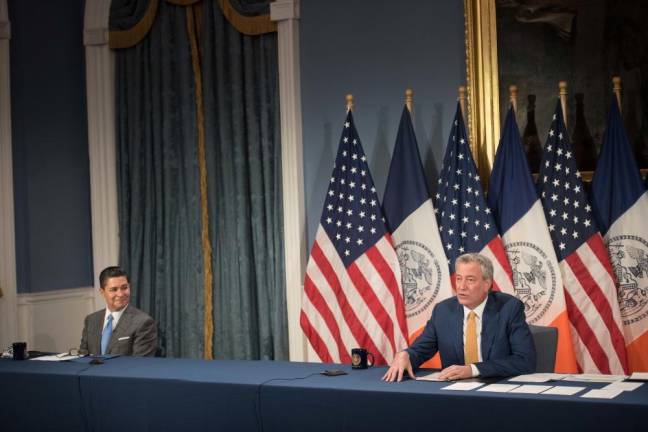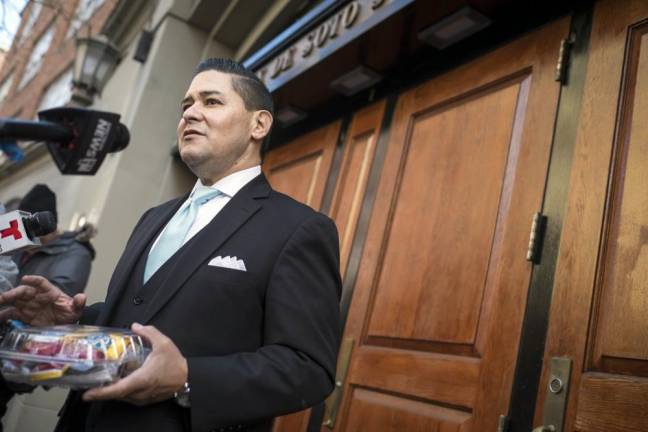Ready for ‘Blended Learning’?
Schools to open in September, but many details still in flux


Students, teachers and parents will once again need to adapt to a new mode of education this fall as the city attempts to balance health and safety with the need to get students back in the classroom.
Last week, Mayor Bill de Blasio announced that schools will re-open come September, but classroom attendance will be limited to one to three days per week in order to keep the spread of coronavirus under control. The city will be implementing new precautions, such as face coverings for every students and staff member (which will be provided to those who need them), hand washing and hand sanitizer stations, and deep cleaning after each school day.
The city hopes a partial reopening, which will include smaller class sizes, staggered schedules and the option to remain a full-time remote learner, will be the answer to the most difficult logistical question, which is, how will students and teachers maintain social distance inside school buildings?
It’s up to individual principals to decide what “blended learning” — which is what the Department of Education is calling the mix of remote and in-person education — will look like at their school. The DOE has laid out a variety of models principals can choose from, depending on the size of its student population and the square-footage of the buildings’ classrooms.
For example, one model would split the school’s population into three groups: two groups of in-person learners (groups A and B) and one group of full-time remote learners. Groups A and B will have two days each week for in-person learning and a third alternating day every other week. Though, schools with larger school populations may only be able to offer students one to two days of in-person learning.
There will also be several dates during the first few months of the school year at which time students had opted to do full-time remote learning, are able to opt-in for in-person instruction.
“The reason we’re coming back to schools and having in-person instruction is because we know it makes a difference,” said Adrienne Austin, the Deputy Chancellor for Community Empowerment, Partnerships, and Communications in the DOE, during a town hall discussion Thursday, which was hosted by Council Member Helen Rosenthal. “We know that in-person learning is critical to meeting academic outcomes and metrics.”
During the discussion, Austin took a variety of questions that underlined just how many details of the city’s plan are yet to be determined, including whether after school care and school-sanctioned sports will be offered in the fall. The DOE also doesn’t know if a nurse will be on hand in each school building, citing the constraints of the budget. Also, how will the city provide childcare during weekday’s students are not in school?
“We’re working through it,” said Austin. “We’re really focusing on the instructional day and making sure it’s covered.”
Face Time
Gabrielle Utting, an English teacher at Manhattan’s High School for Environmental Studies, also has a lot of questions that she hopes will be answered over the course of the next two months.
From a teaching perspective, Utting is relieved that she will have some face time with her students.
“Learning completely remotely was very challenging,” said Utting. “I did feel like we really slowed down. My biggest challenge was trying to teach anything new.”
She said she was able to make it through the spring because of the relationships she had established with her students during the first half of the year — and having time in the classroom, even less frequently, will be invaluable to her students’ success.
Utting said she will need to reimagine her entire curriculum to work with blended learning. But she doesn’t yet know how this will work with to separate cohorts: in-person learners and full-time remote learners.
“Do I create two different curriculums: one for the students that are coming to the building and another for students who are working at home?” she said. “Do I just film myself, teaching when I do it live, and post it online and hope that they could just watch the video and figure it out? What happens if they have a question or they don’t understand something?”
But many of her unanswered questions deal with the physical logistics of learning in schools and whether the will be able to accommodate the health guidelines.
“I’ve worked in five different buildings in the Department of Education, and in three of them, I was in windowless classrooms,” she said. “That’s not the school’s fault but I’m concerned about how do we how do we work with that if we don’t have air circulation if we can’t open a window, and we’re all just sitting in a room, breathing each other stagnant air.”
Utting said she also doesn’t know how students will be able to keep social distance when they move from classroom to classroom in between periods.
“It’s like cattle going through the little gates out,” she said. “I’m wondering if that’s something the schools are considering.”
Utting hopes these questions are answered come September, and that the DOE will keep communicating with teachers and students to find out what worked in the spring and how to make this experience work for students.
“I mean, there is the pandemic that is completely out of anyone’s control and we don’t know where it’s gonna go and we don’t know how it’s gonna evolve over the summer. I’m not asking anyone to perform miracles here but it is going to be a very delicate balance between being flexible but also being consistent,” said Utting. “The best way to support students through all those uncertainties is to have a consistency because then they know what to expect and they know what to do.”
“I’m not asking anyone to perform miracles here but it is going to be a very delicate balance between being flexible but also being consistent.” Gabrielle Utting, teacher at Manhattan’s High School for Environmental Studies